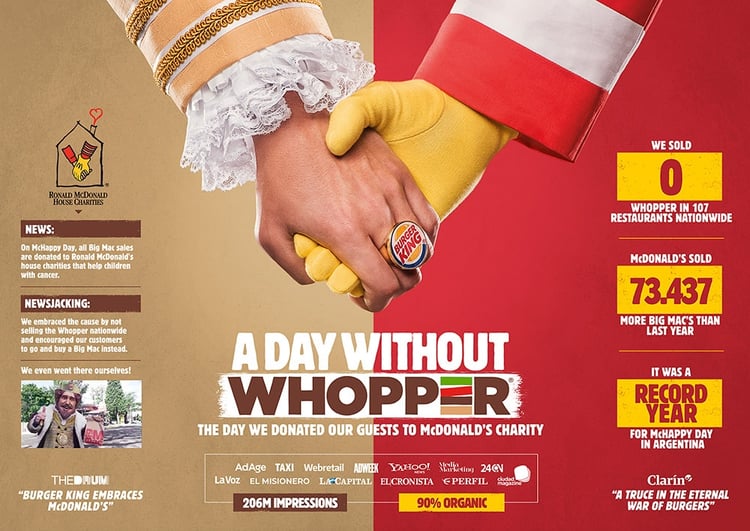Innovative In-Store Customer Engagement Strategies

Subscribe to our newsletter
Updated January 23, 2024. How can you determine whether your retail customer engagement strategy needs improvement?
Quite simply, passive shoppers don’t buy.
The retail landscape continues to evolve at an unprecedented pace, driven by technological advancements and changing consumer behaviors. The key to retail success in this dynamic environment is mastering innovative in-store customer engagement strategies.
What is retail customer engagement?
Customer engagement is an emotional connection between a customer and a buying process.
By interacting with your products and your salespeople, customers become invested enough to buy. If your sales team cannot get a customer emotionally involved with the product using a sales process, product knowledge, and stories of satisfied customers, you’ll have left yourself open to having them walk without buying.
Another way to tell if your retail customer engagement needs improvement is your returns. If a shopper didn’t love it when they got it home, they probably didn’t love it when they purchased it. A smart salesperson could have seen that and taken steps to help the customer bond with the item.
The #1 element of customer engagement
A customer touching, trying on, or holding an item shows active consideration of purchase. Asking questions about how to use the product or using VR to see how it would look on them or in their home are some of the best elements to gauge the customer experience and judge how well a sales presentation is going. The more questions they have, the more they see it in their lives.
The most important element of retail customer engagement is for them to bond so completely that they must take it home and use it as their own.
But engagement has to go further than just a single transaction. You need the goodwill to carry on past a single sale into a lifetime bond with your loyal customer.
To do this successfully, you must communicate with your customers through social media, email, website, chatbots, your store, or any other space where they are. That holds from before they come to your store to after they take your merchandise home.
Train staff to create the ultimate customer experience
The first step toward improving customer engagement is training your staff to create unique, individualized shopping experiences for each customer with a proven sales system that moves a disinterested shopper from being wary of help from a salesperson to seeing them as a trusted advisor.
In short, if you want more customer engagement, you must teach your associates the exact steps to engage a stranger. That retail customer engagement strategy creates an exceptional experience unique to that one person. You can then leverage that trust you build by contacting them via text or video email, like BombBomb. That's how you improve not only your customer retention but also your customer loyalty.
The second step is training staff with a focus on technology. As retail technology evolves, training employees to use these tools proficiently is crucial. In 2024, staff training should encompass traditional sales techniques and the effective use of emerging technologies like AR/VR, AI-driven customer service tools, and digital payment systems. Well-trained employees are better equipped to provide a seamless, tech-enhanced shopping experience, thereby improving customer engagement and satisfaction.
What about experiential retail?
The concept of experiential retail is transforming stores into destinations offering unique, memorable experiences. This strategy involves hosting interactive workshops, product demonstrations, and special events that go beyond traditional shopping.
By creating an immersive and engaging environment, retailers can connect with customers personally, encouraging them to spend more time in the store and fostering a stronger emotional connection with the brand.
How authenticity sets you apart from competitors
In the old days, salespeople knew how to be friendly because they were treated better in stores than on the street. Nowadays, with reality TV, where everyone sees others belittled, and the sitcoms where everyone is a wisecracking cynic, everyone sees the worst behavior modeled. Interacting with people has become harder, and our sales associates have few positive role models to guide them.
As a result, the art of being friendly and engaging customers has disappeared from most retail. After a friendly greeting, it is up to the sales associate to look for something unique about the person standing before them. This part of the sale is what I call the Windows of Contact.
You begin your engagement by finding something you honestly like or notice about them; people will see through phoniness. Then, find something in your experience to share with the customer. With Windows of Conact, common subjects are jewelry, hairstyles, and clothing.
The second part of this is the most important because it makes you memorable. Think of it as an onboarding process for new customers -- everyone is seen and heard before you pitch your brand or product. If you're not memorable or you don’t take the time to connect with them, your target audience - the ones who will pay full price - won't return to you.
My goal of providing a customer with an awesome experience is that when they leave, they are willing to crawl naked over broken glass to repeat it. Nothing will stand in these repeat customers’ way. That's why they will drive past many of your competitors- they know someone at your store on a much deeper level. What they experience in your retail store moves from just transactions to building customer relationships.
Without that connection, you are a robot who asks people what they want, they tell you, you fill out some forms, and their products are either taken with them or delivered. No loyalty program will be able to compensate for rotten customer service.
Sustainability and Ethical Practices:
In 2024, integrating sustainability and ethical practices into retail operations is not just a trend but a necessity. Retailers can engage customers by showcasing eco-friendly products, promoting sustainable shopping practices, and highlighting their commitment to ethical sourcing and production.
This approach resonates with the growing consumer base that values environmental stewardship and social responsibility, leading to deeper customer engagement and loyalty.
Does in-store customer engagement still matter?
Absolutely. People come to a store for a human experience. The trouble is that many retailers have abandoned training their staff. They have settled for order takers or “Asked and Answered” selling. This has trashed those employees' ability to give customers something they can’t get online.
Struggling retailers are cutting staff, training, and service at a time when shoppers say they prefer an engaging experience.
If your business is online, you’ll need to do something similar to get customers to trust you. That’s why candid reviews are so powerful.
An engagement strategy can also use social media so loyal customers feel like they are a part of your brand. Consider the #daywithoutwhopper experiential marketing campaign from Burger King.
They sent messages through all of their social streams that they would not sell any of their best-selling burgers for one day in hopes customers would go to McDonald’s and order a Big Mac to support Ronald McDonald House.

McDonald’s sold 73,000 more Big Macs that one day, and both moved customer loyalty from flavor and transaction to do something good. Customer engagement takes various forms.
Finally, for online and offline retailers, the customer journey can start with a survey or by simply asking a few questions and then using those answers to personalize the experience. Watch Tony Drockton, Chief Cheerleader for Hammitt handbags, ask a new shopper a few questions to engage her and provide her with the perfect handbag.
Customer engagement strategies for online stores
Social media is how smaller brands use marketing to find new customers. They meet the customer through hyper-targeted engagement marketing on Instagram and Facebook. The posts are designed to find the customer in their social feeds and connect with them early in the customer journey.
To help deepen their connection, they use content marketing to answer common questions and engage the reader with blog posts, tips, and how-to videos. Tailored marketing messages can later be used to follow up. AI enables the creation of targeted marketing campaigns that resonate more effectively with individual customers. By analyzing customer data, retailers can send personalized emails, text messages, or app notifications that feature products, offers, and content specifically relevant to each recipient.
While algorithms can use past buying or search behavior, to truly be personal means having enough information to make recommendations and be selling just for that one customer.
Capturing engagement starts with your website. If it is a mobile-first design, it scales and makes it easy to use on a smartphone. You can make the case that the shopper should either go online or go to a store to learn more.
In the case of a retail store, customer engagement is shown through their willingness to drive in traffic through all kinds of weather, to drive past your competitors, and then try to find a parking space.
The displays in the windows and the store's cleanliness engage the customers' eyes and welcome them to shop. The way you greet the customer, the way you have a branded shopping experience, and the way you not only help them find what they are looking for but also suggest a complete picture and help them buy all they need are ways to keep them engaged. That's how you build brand advocates.
If you have an online store, omnichannel customer engagement is shown by how long they stay on your site longer, click through reviews, watch product videos, add to their carts, and then complete the sale.
A survey I conducted with Oracle Netsuite found that 80 percent of consumers do not feel they are provided with a personalized in-store and online shopping experience. That means they are not engaged in any meaningful way.
Retail customer engagement helps you retain and attract new customers because it gives the shopper a feeling they matter. People who feel they matter buy more and stay loyal to a retailer long after they have forgotten the price of the item they originally came to buy.
It also enables you to anticipate and correct problems before they arise. You see their body posture when something isn’t right. When they don’t believe you, they get quiet. You can view where their attention is focused and bring them back using questions.
Online customers can have every click and action recorded in heat maps. Those actions can help you understand why 90% of shoppers put items in their carts and abandon them without purchasing.
Customer engagement makes your store the obvious shopper's choice
Use these customer retention strategies to build engagement. Always remember we are in the people business, which means you must notice them and share something of yourself if you want to build customer satisfaction. That loyalty pays off big when they talk to their friends about the nice people down at your store -- something your competitors can’t even dream about having their customers say!



.webp?width=102&height=111&name=iStock-1188041917%20(1).webp)